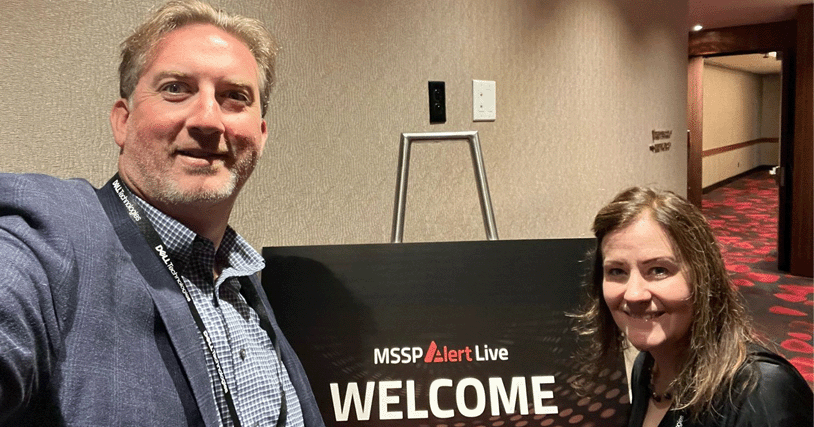Four Tips on Network Security Practices from the MSSP Alert Live Event

Managed Service Providers (MSPs), Managed Security Service Providers (MSSPs) and technology vendors recently gathered at MSSP Alert Live in Washington, DC. The newly launched conference brings together experts in cybersecurity. While the event was tailored largely to security pros, I gleaned four tips that can benefit businesses of all shapes, sizes and sectors—including those in cybersecurity.
- Provide security training to all of your people. While it’s important to harden your network with the right security tools, technologies and services, it’s just as important to train your employees to understand their role and responsibility when it comes to protecting the network. That includes introducing them to both threats and resolutions. Different roles within an organization will need different types of security training. For example, those who staff the ‘help desk’ may need to know how to identify and respond to incidents, while the marketing team may only need to learn how to spot and avoid threats, like phishing attacks.
- Report all security incidents and don’t pay ransomware. U.S. government agencies have taken a unified stand on not paying ransomware. A 2020 ruling by the U.S. Department of Treasury’s Office of Foreign Assets Control (OFAC) and the Financial Crimes Enforcement Network (FinCEN) now states that most cases of paying a ransom are illegal. Instead, experts advise reporting ransomware as well as any type of incident to the Cybersecurity & Infrastructure Security Agency (CISA), the Federal Bureau of Investigation (FBI), or the U.S. Secret Service so they can track trends and locate offenders. Reporting an incident to one of these agencies suffices, since they share information.
- Conduct a postmortem. While the goal is always to avoid an incident, in the event one happens, you can learn a lot after a breach. That’s why it’s wise to conduct a postmortem following an incident. When you do, focus on the “why.” (Why were we vulnerable to this threat? Why do we save evidence? Why didn’t we identify the incident sooner?) Such insights identify how to better secure your network going forward. You can then update your incident response training as appropriate. (There are even free incident response card and tabletop games available to make incident response training livelier and fun. Check out: Backdoors & Breaches.)
- Look beyond basic security tools and subscriptions. Many businesses pay a monthly fee for subscription-based, off the shelf or big box, security tools. That may be fine for the home network, but most enterprise networks—and the threats they face—are too complex for a single tool to handle. As a result, subscriptions like these may provide a false sense of protection and leave an enterprise vulnerable. Hardening a network requires considering everything from firewalls, rules, and remote access points to unused ports, unnecessary protocols, and access lists—all aspects of securing a network that an MSSP like Hughes can address.
In addition to attending presentations, capturing expert advice and meeting with industry leaders, my colleagues and I were also on hand when MSSP Alert named Hughes as a Top 250 MSSP globally for meeting the highest quality in cybersecurity—for the second year in a row. The list is based on MSSP Alert’s 2022 readership survey, combined with the digital media site’s global editorial coverage of MSSPs.
Go here to read insights on securing enterprise networks today from Paul Kay, EchoStar’s global chief information security officer.